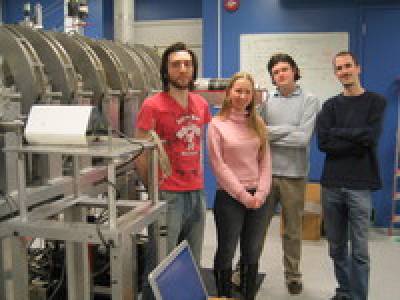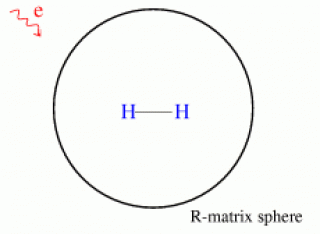Prof Nella Laricchia and Prof Jonathan Tennyson
The study collisions of particles with molecular targets is a core research activity within the AMOPP group. These studies reveal important fundamental details of collision physics of electrons, positrons and positronium with atoms, and small and large molecules.
Collisions of Positrons and Positronium with molecules (Prof Nella Laricchia and Prof Jonathan Tennyson)
Although still considered somewhat exotic particles, positrons (the antiparticles of electrons) and positronium (the bound state of an electron and a positron) are currently employed in the exploration of fundamental effects ranging from condensed matter physics to astrophysics as well as in the diagnostics of living biological systems and of the electronic and structural properties of industrially important materials.
| Our main research interests are in atomic physics problems where beams of positrons and positronium with speeds comparable to those of atomic electrons are contributing to the unravelling of general collision phenomena as well as illuminating specific interactions and processes such as exchange and annihilation. Current hot topics of research worldwide include positron-induced ion production (comprising ionization with and without Ps formation, annihilation, etc), positron impact excitation (vibrational and electronic) and positronium scattering. Measurements of differential ionization and positronium collisions are in their infancy. UCL is a pioneer in this type of research. |  |
Scattering of electrons from molecules (Prof Jonathan Tennyson)

The molecular physics group studies the scattering of electrons from diatomic and polyatomic molecules using the R-matrix method. Applications include fusion plasma modelling (see workshop on Electron-molecule Collision Data for Modelling and Simulation of Plasma Processing held in 1998) and applications in astrophysics. Scattering cross-sections are computed as well as bound state energies of N+1 electron systems. |
 Close
Close

